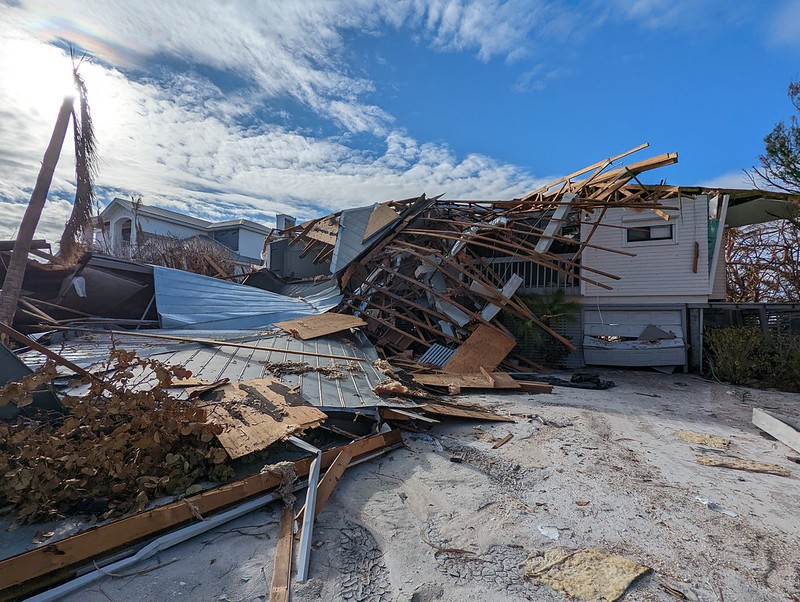Excerpt:
Hurricanes are more frequently escalating quickly, and the places they destroy may be those disadvantaged by racist housing policy
Chelle Walton remembers how the water rushed into her home, the night Hurricane Ian made landfall. The 68-year-old found herself chin-deep in water, scrambling to grab essentials like her husband’s medication. “Strangely enough, things float in saltwater,” Walton said.
Walton and her husband Rob had decided to shelter in place, despite repeated evacuation notices.
“You make all of your decisions based on past storms,” said Walton. “It turned out to be a bad decision.”
Walton has lived through four major hurricanes since she moved to Sanibel, a barrier island off the Florida coast in 1981. If she could go back, she says she would have left the day before landfall. “We will never stay again,” Walton said.
Hurricane Ian, a devastating category 5 storm that led to 149 deaths across the state of Florida, was one of the most powerful hurricanes to ever strike the US. It demolished homes and businesses and left more than 2 million without power. Part of its devastation stemmed from how quickly it progressed; as the storm approached the US, Ian underwent a dramatic and difficult-to-predict escalation in a short amount of time, a phenomenon known as rapid intensification. With climate crisis warming the oceans at a record pace, scientists say these types of storms are occurring more frequently. And unless coastal communities like Sanibel invest in robust disaster preparedness, residents may continue to find themselves blindsided by these extreme weather events…
“It’s one of the most important challenges facing our field right now,” said Alex DesRosiers, a researcher at Colorado State University specializing in intensity change. Some recent storms have seen wind speeds increase by 60mph (96.6km/h) in a day. “That’s the difference between a category 2 and a category 5,” DesRosiers said. One such example is Hurricane Michael. In 2018, this devastating storm jumped from a category 2 to category 5 the day before making landfall in Florida…
The communities likely to be hardest hit by rapid intensification may also be historically disadvantaged by decades of racist housing policy. In the 1930s, the US government created a series of maps which showed where Black people, immigrants, and other minority groups lived, deeming these “redlined” areas as risky investments. These discriminatory practices ensured that both public and private entities like banks and insurance companies systematically denied housing or financing of mortgages to Black families and other households of color.
“What that meant is that those families disproportionately ended up in substandard housing and high flood-risk areas,” said Hannah Perls, a senior staff attorney with the Harvard environmental and energy law program.
While outlawed with the passage of the Fair Housing Act of 1968, its legacy persists and is felt in communities of color to this day.
“When a disaster comes along, either their house is not built to stand up to that disaster or they’re in areas that are getting heavier winds, flooding and impacts,” Perls said. The disproportionate impact of extreme weather on these vulnerable communities also continues after the storm, hindering recovery efforts. “There’s a legacy of discrimination, still, in the way that homes are assessed in terms of their value or people’s ability to access insurance…”









